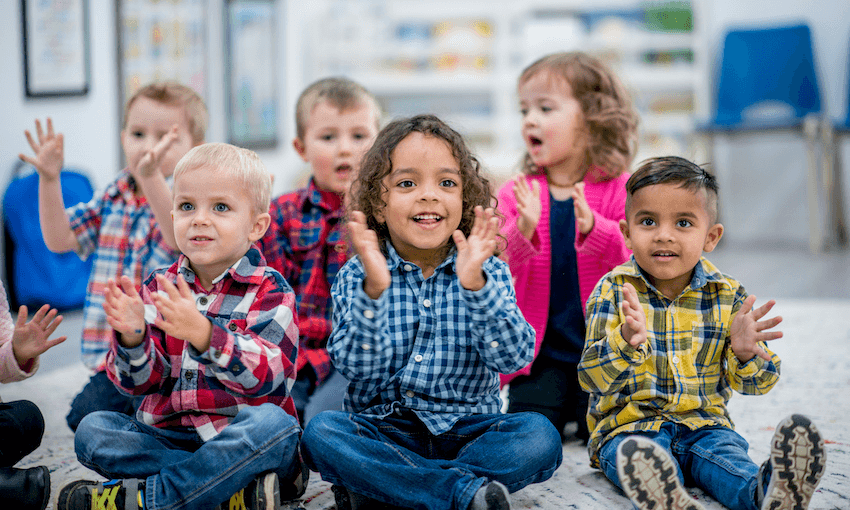New child poverty figures were released today by Statistics NZ. A press release from the prime minister boasts, ‘18,400 children lifted out of poverty’. National meanwhile claims ’20k more children in poverty under Jacinda Ardern’. Can they both be right? As ever, the numbers are more complex (and malleable) than they seem. Leonie Hayden and Toby Manhire sift through them.
Upon becoming prime minister Jacinda Ardern took on a newly created portfolio devoted to fighting child poverty. The issue demanded, she said, “urgent progress”. As she prepares to seek a second term, statistics have been released reflecting what progress has, and hasn’t, been achieved. The reporting is required as part of the Child Poverty Reduction Act 2018.
As politicians present conflicting interpretations of the numbers, here’s a snapshot in numbers.
9
The number of different measurements for child poverty, for which statistics were published today. The metrics, which measure the year to June 2019, include the proportion of children living in low-income households before housing costs, after housing costs, and material hardship.
17
The number of basic things most people regard as essentials. These include access to a vehicle or computer, owning two pairs of shoes in good condition, a good bed, fresh fruit and vegetables and presents on special occasions. Material hardship is defined as missing out on more than six of the 17.
147,600
The number of children (13.3%) living in material hardship in the year ending June 2018.
151,700
The number of children (13.4%) living in material hardship in the year ending June 2019. In Stats NZ’s summary: “There was no significant change to material hardship rates.”
183,400
The number of children (16.5%) living in households with less than 50% of the median household income before housing costs are deducted in the year ending June 2018.
168,500
The number of children (14.9%) living in households with less than 50% of the median household income before housing costs are deducted in the year ending June 2019.
Another of the measures calculates median household income after housing costs. On this measure, the 2018 figure of 253,800 (22.8%) drops to 235,400 (20.8%).
1 in 5
The number of Māori children (55,000) who live in households with less than 50% of the median household income before housing costs are deducted. Almost one in four Māori children (23.3%) were living in material hardship. The rate is higher for Pacific children at 28.6%.
1 in 9
The number of Pākehā children (80,300) living in households with less than 50% of the median household income before housing costs are deducted.
$5.5 billion
The amount of money behind the Families Package, which contributes to increasing paid parental leave, increasing accommodation supplements, the Winter Energy Payment, the Best Start Payment in the first year of a child’s life and the Family Tax Credit. The government points out that the household economic survey, on which these results are based, asked respondents to cover the period July 2017-July 2019, half of which pre-dates the introduction of the package.
18,400 v 20,000?
The championed Labour number of “18,400 children lifted out of poverty” picks the rosiest of the primary measures, the after-housing, under 50% of median measure, or to give it its full Stats NZ description – deep breath – “children living in households with less than 50% of the median equivalised disposable household income after housing costs are deducted”. That figure did indeed drop by more than 18,000 from June 2018 to June 2019.
The headlined National number, “20k more children in poverty under Jacinda Ardern”, hinges on a supplementary measure. As explained in its press release, it is “based on the difference between 2017 and 2019 of the number of children living in households in New Zealand in each financial year with income less than 60% of the median equalised disposable household income before housing costs”.
Let’s check that. In the year to June 30, 2019, the number of children in this category is 263,400; back in the year to June 30, 2017, it’s 243,300. It scans.
But dig into the Stats NZ numbers a little deeper and you’ll see this: the number for the year ending June 2018 is 281,000. That is, from June 2018 to June 2019 the number of kids fitting this definition of poverty dropped by 18,000.
And the troubling 2018 spike can hardly be pinned on the current government; the survey it is based on asked respondents to cover the period July 2016 to July 2018. National was in government for most of that.
Or, to look at it another way, the measure of child poverty National has chosen to highlight was 267,900 kids in 2015. The same number today is 4,500 fewer.
859
Days since the Labour Party, Green Party and NZ First formed a government.
207
The number of days until the 2020 general election.

